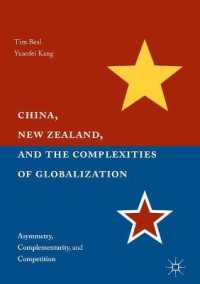Full Description
Moving beyond the dominant model of syncretism, this extensively illustrated volume proposes a completely different approach to the field known as Latin American "colonial art," positioning it as a constitutive part of Renaissance and early modern art history.
From the first contacts between European conquerors and the peoples of the Americas, objects were exchanged and treasures pillaged, as if each side were seeking to appropriate tangible fragments of the "world" of the other. Soon, too, the collision between the arts of Renaissance Europe and pre-Hispanic America produced new objects and new images with the most diverse usages and forms. Scholars have used terms such as syncretism, fusion, juxtaposition, and hybridity in describing these new works of art, but none of them, asserts Alessandra Russo, adequately conveys the impact that the European artistic world had on the Mesoamerican artistic world or treats the ways in which pre-Hispanic traditions, expertise, and techniques-as well as the creation of post-Conquest images-transformed the course of Western art.
This innovative study focuses on three sets of paradigmatic images created in New Spain between the sixteenth and seventeenth centuries-feather mosaics, geographical maps, and graffiti-to propose that the singularity of these creations arises not from a syncretic impulse, but rather from a complex process of "untranslatability." Foregrounding the distances and differences between incomparable theories and practices of images, Russo demonstrates how the constant effort to understand, translate, adapt, decode, transform, actualize, and condense Mesoamerican and European aesthetics, traditions, knowledge, techniques, and concepts constituted an exceptional engine of unprecedented visual and verbal creativity in the early modern transatlantic world.
Contents
Note on Translations
Acknowledgments
Prologue: From One Triptych to Another
Introduction: At the Frontiers of Art Histories
Part One: A Triptych from New Spain
Chapter 1. Treasures
Chapter 2. Figures
Chapter 3. Malicias
Part Two: Images between Words
Chapter 4. Mosaics
Chapter 5. Landscape
Chapter 6. Scratching
Part Three: The Creation of Unexpected Languages
Chapter 7. Relics of Ixiptla
Chapter 8. Circular Realism
Chapter 9. Figurative Condensation
Conclusion: Untranslatable Images?
Notes
Bibliography
Photographic Credits
Index








